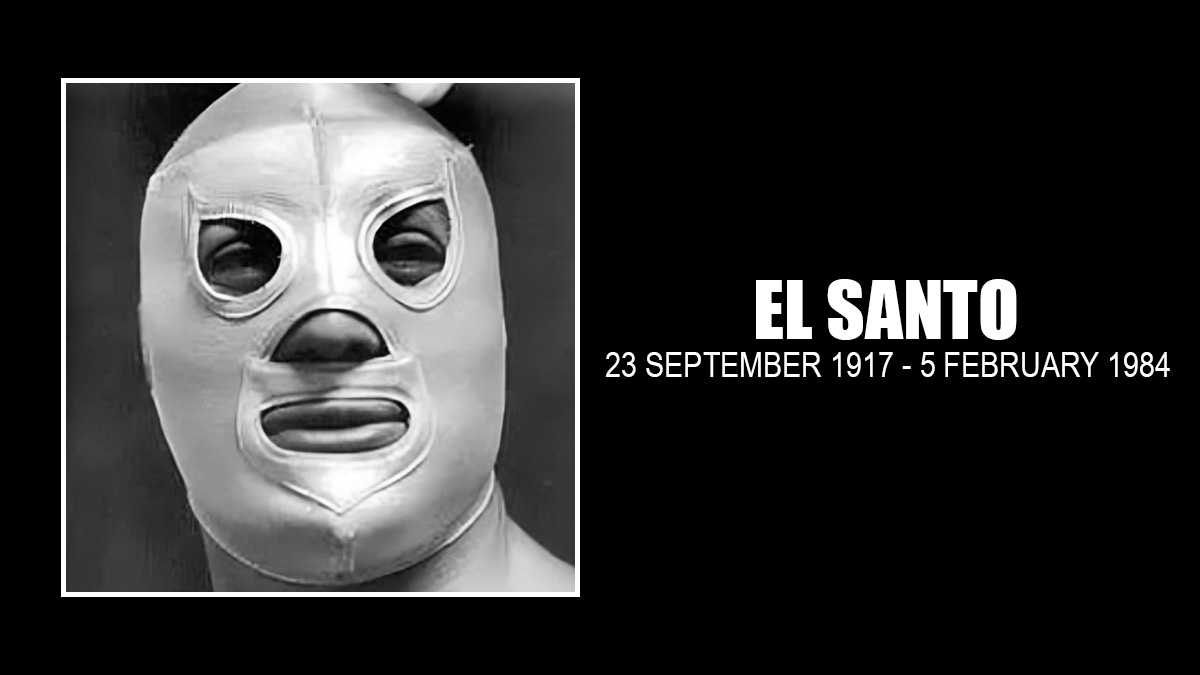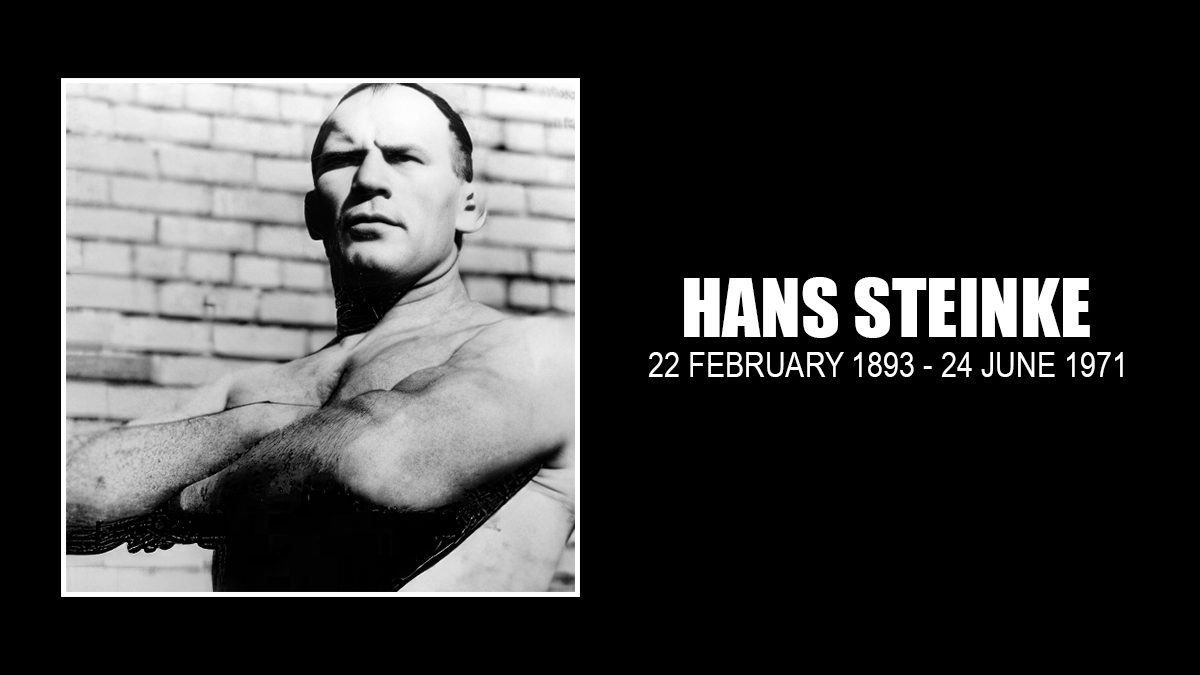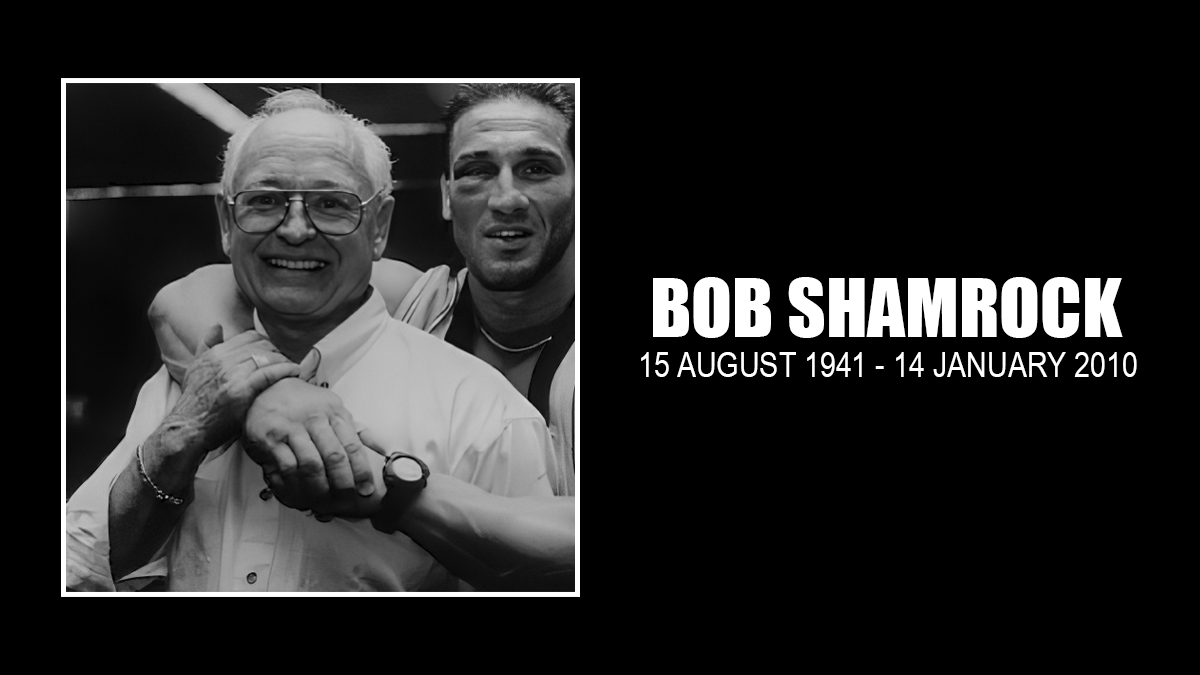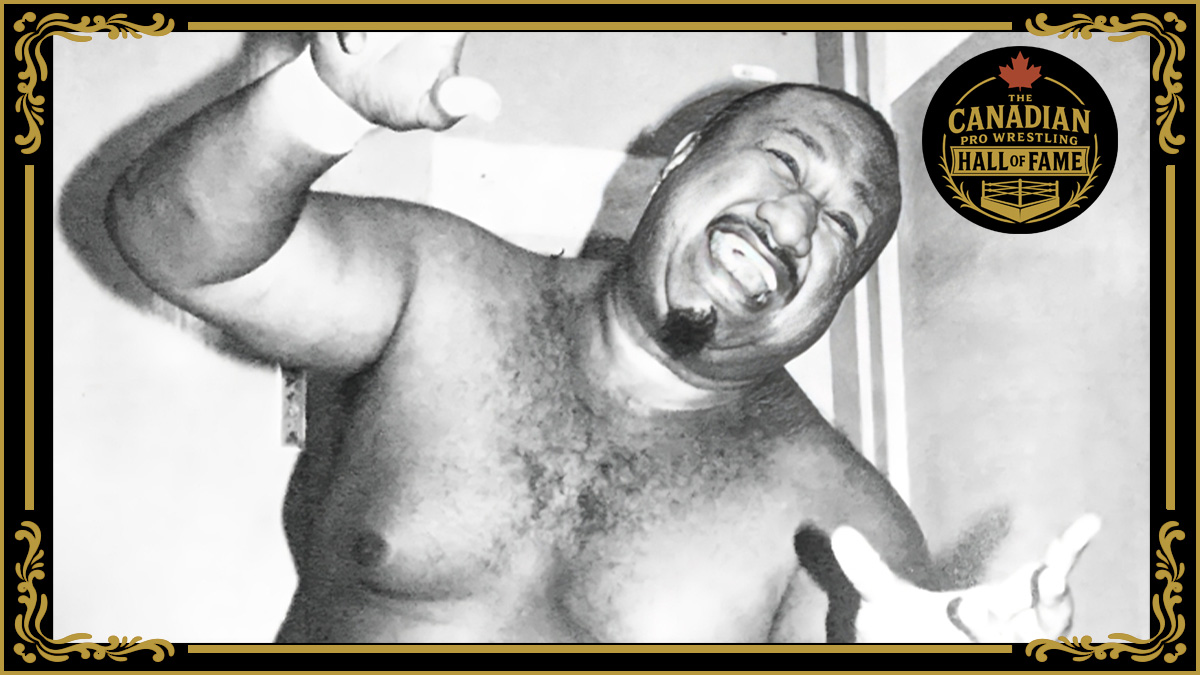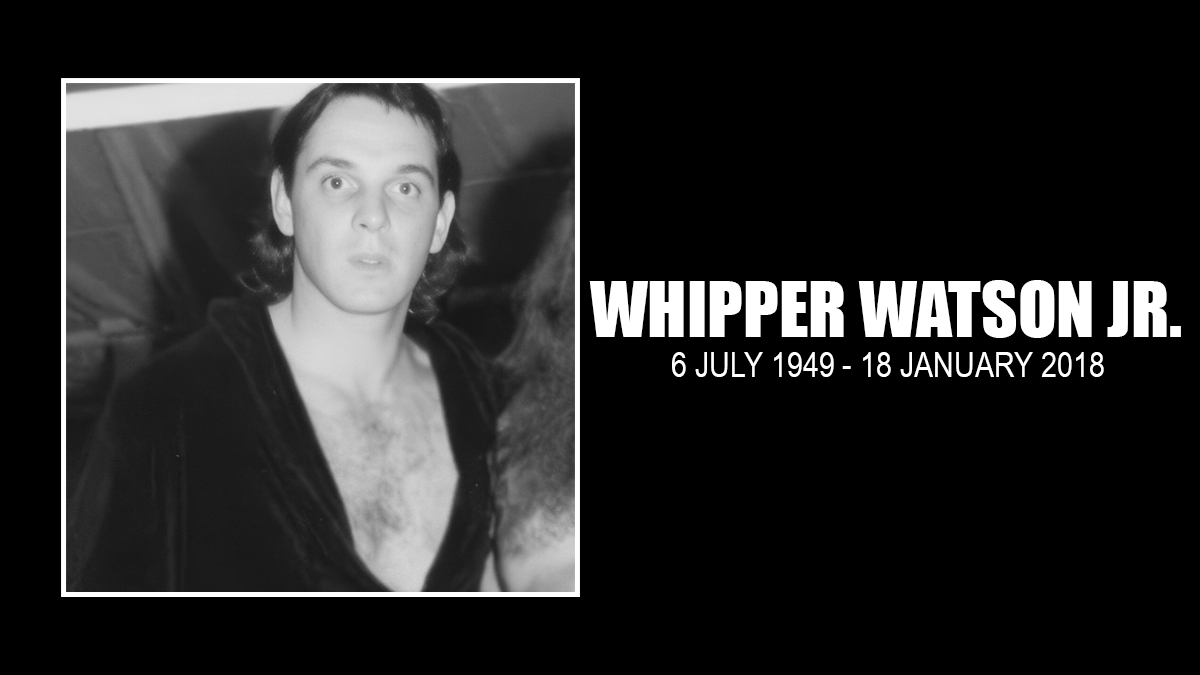On July 26, 1942, Rodolfo Guzman Huerta made his pro wrestling debut, winning an 8-man battle royal in Mexico City. At the time, very little was made of the event. After all, wrestling’s popularity in Mexico was exploding at the time and Huerta was just another green, awkward rookie.
Nobody could have imagined that Huerta would go on to enjoy a 40 year career and capture the hearts of the nation of Mexico as the masked El Santo (translated into English as The Saint), the most beloved wrestler in Lucha Libre history.
This past Saturday marked the anniversary of Santo’s death in 1984. Sixteen years after passing away, the people of Mexico have not forgotten the indelible mark El Santo made on the nation. Although not an official holiday, the day is marked by nationwide celebrations, memorials and wrestling cards honouring his memory. Fans from all across Mexico make a pilgrimage to his mausoleum site in Mexico City, paying homage to the man affectionately nicknamed “El Enmascarado de Plata” (The Man in the Silver Mask).
It seems odd that a masked wrestler could have such a lasting effect on an entire country, but then, El Santo was far from your average wrestler.
The story of El Santo’s incredible career is directly tied to Lucha Libre’s earliest days. In 1933, a Mexican promoter by the name of Salvador Lutteroth brought pro wrestling to Mexico after seeing it while on a trip to Texas. With its fast-paced, athletic style, Mexican pro wrestling became one of biggest attractions in Mexico. Lucha Libre (the Spanish word for pro wrestling which translates into free fighting in English) was born.
Huerta moved to Mexico City and became enthralled and captivated by Lucha Libre. He trained to become a pro wrestler at a local gym and made his debut under the name Rudy Guzman. Guzman competed as a rudo (Spanish word for heel wrestler) but never gained any measure of notoriety.
In 1934, an American wrestler debuted in Mexico under a black, leather mask. Lutteroth dubbed him El Enmascarado, “The Masked Man.” Soon, Lutteroth incorporated the use of other masked wrestlers into Lucha Libre, creating super heroes and villains for the audience to identify with. The move was a huge success and the modern era of Mexican wrestling was born.
This trend toward masked heroes was not lost on Huerta. He put on a mask and called himself Murcielago II (The Bat) but quickly dropped the name when the wrestler playing the original Bat character complained. Needing a new name and gimmick, Guzman took the name El Santo from a character from Alexandre Dumas’ novel The Man In The Iron Mask, donned a long flowing silver cape and what would become his trademark silver mask. And with that a career was born that would see El Santo become embedded in Mexican popular culture and become a national treasure for over four decades.
“He totally transcended wrestling,” states Dave Meltzer, editor of the Wrestling Observer newsletter. “He was much bigger than just a wrestling star. I think there have been wrestlers as big as him and as popular as him but none for 40 years where everybody in the country knows him. Santo was more than just a wrestler. Nobody had the enduring popularity he had.”
“He was a such a phenomenon because he touched so many people,” comments Mike Tenay, WCW broadcaster and noted Lucha Libre expert. “There were so many people that identified with Santo and I think’s that one of the things that made him the cultural icon he was.”
“He was among the first to take the persona of the masked wrestler and to really gain an identity with it,” continues Tenay. “He was among the first wave of the masked wrestlers. He was the first that really made it big.”
Masked wrestlers are not all that uncommon in American wrestling. There have been a host of them over the years. But when they leave the arena after the matches are over, the slip out of their character and assume their real identities.
As soon as Huerta put on that silver mask his life literally changed. He was no longer Rudolfo Guzman Huerta; he was El Santo.
“He didn’t have a secret identity. He was always El Santo,” offers David Wilt, a Santo expert who runs the Santo, el Enmascarado de Plata website, celebrating the career of El Santo. “He wasn’t just a fictional character, he was an actual person. He wasn’t like George Reeves playing Superman and making a few public appearances, he was actually El Santo.”
As he grew in popularity as a wrestler, Santo quickly went from a cult figure to a national hero who crossed over into every imaginable form of Mexican culture. In 1951, a weekly comic book was created based on El Santo. The comic was a million dollar seller as the people of Mexico followed the super hero exploits of El Santo each and every week.
And then the film industry came calling. Mexican cinema was looking for a new film formula to bank on. Producers saw the popularity of Lucha Libre and its masked wrestlers and wanted to capitalize. Santo was immediately cast and the Lucha Libre horror genre was born.
“In the ’40s and ’50s he was really popular with the wrestling and the comic book,” explains Wilt. “But film really brought it to a whole new level for fans who were not wrestling fans and who didn’t read comic books. Now, he’s reached the level where he really was a major figure in Mexican popular culture.”
As Lucha Libre enjoyed its golden years in the ’40s and ’50s, the basic struggle in the matches was defined by the battle between the technicos (Spanish term for babyfaces) and the rudos. More and more Lucha Libre storylines mirrored the real life corruption, hardship and the struggles on the streets of Mexico City. Wrestlers like Santo, who were portrayed as law-abiding, honest citizens fighting the evil, corrupt rudos filled the void, balancing the laws of justice in favour of the working man.
“There are few figures like El Santo who have historically dominated the most popular end of the popular culture spectrum,” says David William Foster, a Spanish language professor at the University of Arizona and an expert on Mexican cinema and literature. “In a society like Mexico there is the need for cultural heroes.”
“The idea of someone who is going to avenge the wrongs of the world. There’s a lack of sense of justice, order and in society. El Santo caught on and he was absolutely venerated in Mexico for decades.”
Between 1958 up until his last movie in 1982, Santo starred in 54 films. Fighting for justice and the forces of good, these campy movies saw Santo battle vampires, aliens, zombies and Martians. He was often joined by Mil Mascaras and Blue Demon, two other Lucha stars that had big film careers, battling his real life wrestling opponents. Sequences from Santo’s pro wrestling matches were often used in the films.
“The formula for classic Lucha Libre films have the hero who is an active wrestler and at the same time he’s also a costumed crime fighter,” explains Wilt. “What really distinguishes it from run-of-the-mill super hero films is that instead of having a secret identity, his other identity is as a pro wrestler. The plot spills over into the arena matches. You have this dichotomy between pro wrestling and crime fighting.”
As the legend of El Santo grew, so did the lengths he went to protect his identity. Whenever he went out in public, he always wore his mask.
“El Santo really guarded his secret identity,” states Wilt. “Whenever he was in public he always wore his mask. He had different masks for different occasions. When he had to eat he had a mask with a chin cut away, you couldn’t eat with a small hole in his mask. He would make public appearances at bullfights and with politicians in his mask.”
“Everything he would do to protect his identity, that for me is one of the most amazing aspects about him,” exclaims Tenay. “That mask was omnipresent at every public appearance he made. In today’s wrestling time that’s just non-existent that anybody would care to that degree but I think you could tell he took that care in protecting his identity. I think that was also part of that package that made him larger than life.”
“Without the mask he was just Rudolfo,” says Rogelio Agrasanchez Jr., whose father helped produce two of El Santo’s most popular movies in the ’70s. “But when he put that mask and costume on he was El Santo.”
“He was in Misterio en las Bermudas (Mystery in Bermuda) which my dad was filming in Texas,” recalls Agrasanchez. “My brother was driving him and Mil Mascaras up from Mexico into Texas. As they were approaching the Texas border, my brother told them they had to take off their masks when they went through customs. Santo was very leery and told my brother ‘OK, but don’t look back.’ That’s how secretive he was.”
Santo was so protective of concealing his identity that he would often take a different flight from the production crew to film locations because he didn’t want them to see him go through customs without his mask for fear of being identified later on the set.
While El Santo was unquestionably the most popular and recognizable Lucha star, he was not as good of a worker as Gory Guerrero, Eddie Guerrero’s father and considered by many as the best wrestler in the history of Mexico.
Guerrero and Santo teamed in the ’60s as La Pareja Atómica (The Atomic Pair) and set Mexico on fire. And although Santo was more popular, Guerrero was by far the better wrestler.
“They grew a really special relationship,” says WWF star Eddie Guerrero. “They were real good buddies and my dad had nothing but respect for him. When Santo made his name for himself it was a real pleasure for my dad to be a part of it in some way. They went out there and busted their buts and made names for themselves into something big.”
“The reputation Santo had was he was good, not great,” says Tenay. “I think it’s very similar to Hulk Hogan where that ability to work in the ring was secondary due to that larger than life presence.”
Through the ’60s and ’70s, Santo would split his time between wrestling and movies. And so the legend continued to grow.
Finally, cracks in the Lucha Libre horror film genre began to appear. In 1976, a new president was elected in Mexico and a new agency was formed dedicated to Mexican film. The government, not impressed with the genre, quickly pulled all funding for the films making it impossible for producers to finance their films. This move combined with the import of foreign kung fu movies into Mexico, spelled the end for the film genre.
“One of his last films, Misterio en las Bermudas, marks the end of the genre,” explains David Wilt. “Santo made four more films and there was a brief revival in the early ’90s [without Santo] but it was pretty much over.”
As Santo continued to wrestle his body began to break down. He was no longer as effective in the ring as he once was and on September 12, 1982, he retired from active competition. For Santo, the pain of retiring was made easier when his son debuted shortly after carrying on in his footsteps as El Hijo del Santo (the son of the Saint).
Even in retirement, El Santo protected his identity. He wore the mask on several TV appearances and as he entered a new career as an escape artist.
On January 26, 1984, El Santo appeared on a Mexican talk show and without previous warning he publicly unmasked for the first time in his career. Underneath the legendary silver mask was an old, battered face.
Days later he was performing in a skit at a theatre when he complained of a pain in his arm. He was rushed to the hospital. But it was no use. He passed away that evening in his hospital bed. He was 68.
Santo’s funeral was among the largest in the history of Mexico. Thousands flooded the streets of Mexico City outside the funeral parlor, wanting to catch a glimpse of their fallen hero. Masked wrestlers Mil Mascaras and Blue Demon attended the funeral, breaking down in front of the coffin as they paid their final respects.
It took hours for Santo’s coffin to make it from the funeral parlor into the hearse. He was placed in a mausoleum in Mexico City with a simple plaque bearing a likeness of his silver mask. And of course he was buried with the mask on. The wrestling storyline goes that on his deathbed Santo told his son El Hijo del Santo to carry on the tradition and to never lose the mask as part of match stipulation.
El Santo remains embedded in Mexican popular culture. His likeness was recently printed on a series of national lottery tickets in Mexico.
And even in death there is a concerted effort to respect his memory by protecting his identity. In November of 1999, SOMOS, a Mexican film-nostalgia magazine, published photos of El Santo without his mask. El Hijo del Santo was outraged and threatened to sue the publication. As it turned out, one of El Santo’s other sons provided the magazine with the photos, and the lawsuit was quickly forgotten.
Looking back, several experts try to contextualize Santo’s popularity and explain his popularity.
“He was one of the biggest stars in Mexico even before he made his first movie,” explains Meltzer. “I’ve read it where he’s been compared to Babe Ruth or John Wayne in American publications trying to put him in a context for Americans.”
So why was he such a cultural phenomenon?
“He was a real person,” explains Wilt. “Here was someone who was not an actor. You see him in the movies and then you could watch him on TV and go to your local arena and see him wrestle in person, and go to your newsstand every week and buy a comic book that had his adventures in it. He’s not just a fictional character, he’s an actual person.”
“El Santo is one of the maximum idols in Mexico,” continues Wilt. “He’s not just a character in film, but a real life person. He’s different in that he’s not someone playing a role, he lived his entire life almost not able to show his face. His impact on Mexican culture and society was huge.”
EL SANTO FACT SHEET
Over the course of his 40 year career, El Santo captured the imagination and hearts of the people of Mexico. Through his in ring career and his movie career, Santo became the most endearing cultural icon in Mexican history.
Real Name: Rodolfo Guzman Huerta
Nickname: “El Enmascarado de Plata” (The Man of the Silver Mask)
Born: September 23, 1917 in Tulancingo, Hidalgo, Mexico
Died: February 5, 1984 at the age of 68 in Mexico City, Mexico
Wrestling Debut: July 26, 1942, winning an eight-man battle royal in Mexico City
Finishing Move: “La de a caballo” (arm camel clutch)
Titles Held: Mexican National Welterweight, Mexican National Middleweight (4), Mexican World Welterweight (2), Mexican World Middleweight, Mexican National Tag Team (2), Mexican National Light Heavyweight
First Film:CEREBRO DEL MAL (Brain of Evil) — 1958
Last Film:LA FURIA DE LAS KARATECAS (The Fury of the Karate Experts) — 1982
Total Films: 54
